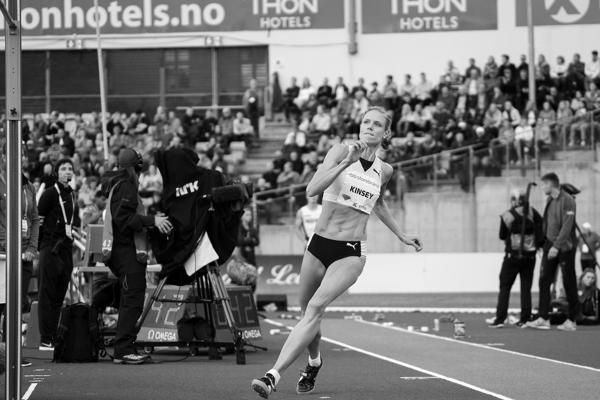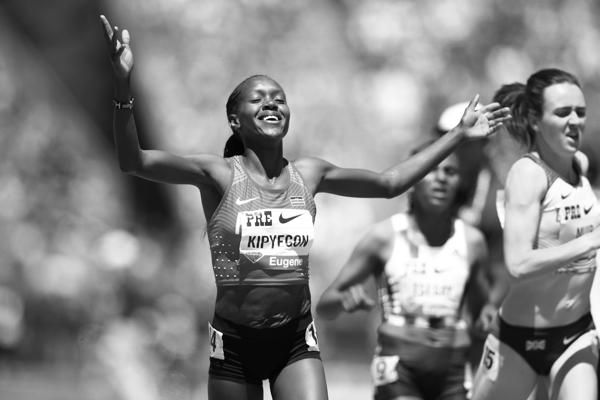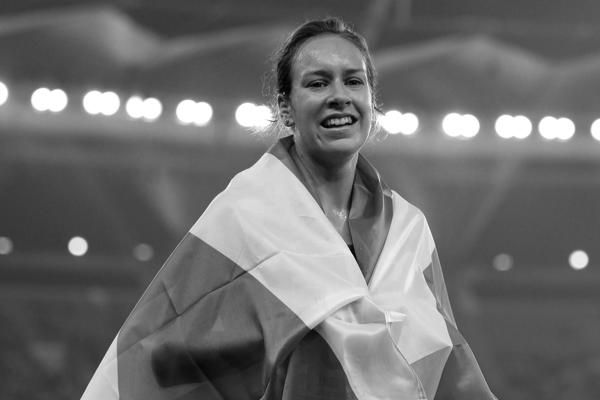Hedda Hynne
by Hedda Hynne
For a lot of my career, I used to say to my coach that I wish I started earlier, that if I did, maybe I could have done something really special.
In the 800 metres, the reality is most athletes run their best times in their early 20s. But for me, the trajectory was always going to be different. I only took up the sport then.
I’m 30 now, and there can be a certain stigma in athletics when you reach that age. Some people think you’re done.
But the good thing about starting late is my training age is still really young. I haven’t pushed my body too much or tired out my mentality. I’m hungry, my body is robust, and I’m ready for a lot more years in this sport.
Which is good, because it takes a long, long time to reach your peak.
Growing up, I was a soccer player. That was my main sport until I was 15 or 16, but then I quit. I tried athletics for a while, training just a few times a week for 100s and 200s, and I remember trying the 400 for the first time when I was 17, running 57 seconds.
But in the years that followed I drifted away from athletics, only coming back when I was 20 or 21, after I moved to Trondheim for university.
In 2011 and 2012, I mostly did 400s but once I started working with my current coach, Erik Sakshaug, he said: “You need to try the 800.”
I thought it’d be the most horrific thing ever but my first 800 – at a British Milers Club meeting in Manchester, England – felt easy because I was so intimidated by the extra lap. I ran 2:07.
As I did more and more 800s I realised, okay, I’m actually pretty bad at this. I had a lot to learn.
The following year I lowered my PB to 2:02 and qualified for the European Championships in Zurich. That felt like a circus, a huge stage to suddenly find myself on, but even though I ran badly it was a really good experience.
To make the jump to the next level, I knew I had to make athletics my priority.
I’d been working with a sports psychologist for years and he taught me so much about how to be an athlete. He explained early on the issues so many athletes have, the struggle to stay afloat financially, and I decided I would make the choices needed to be the best possible athlete.
That’s one of the main things my coach taught me: how important it is to set up a structure where you’re not concerned about paying rent or getting food, where you can just focus on performance.
Erik is not just my coach, but also my boyfriend, and we share the same goals. Both of us are so into it that we could talk and breathe and sleep track all day, and rather than worry about any overlap between our coach-athlete and boyfriend-girlfriend relationships, we focus on the positives.
Since 2015 I’ve been a full-time athlete, but that first year was tough: I was injured for most of the season. In moments like that, you need good people around you.
My psychologist was one of those. He’s the person on my team I’ve worked with the longest, and he makes me grow, not only as an athlete but also as a person.
It’s mind-blowing how much you can expand. Running is so simple but you can raise your level so much if you can use your mental skills. It’s often the difference in winning medals at the championships.
In 2016, I made the European final in Amsterdam and then competed at my first Olympics, but Rio was kind of overwhelming. Having been through that experience once, though, I’d like to go back and do another.
I know I can do a lot better.
In 2017, I broke two minutes for the first time and last year, I felt I was in shape to do it many times – but for some reason it never quite clicked. I knew 2020 would be better.
But when the Olympics were postponed and then the Europeans were cancelled, it hit me hard. Depression is too strong a word for it, but I definitely felt a deep sadness even though I knew it was absolutely the right decision.
We postponed the sharpening of my shape, went back to base training. I had to borrow a lot of equipment and we made a gym in my garage, and I used the treadmill a lot during the first weeks of the lockdown.
My first few races in the summer weren’t great, but I was just happy to be back out there, and then all of a sudden I started to feel good.
I raced Laura Muir and Jemma Reekie in Trieste, running 1:59 with a negative split, and I knew that day I was in shape to go faster. In September I got my chance, running a Norwegian record of 1:59.15 in Rovereto and breaking it again the following week in Bellinzona, running 1:58.10.
That was an amazing night, one that gives me goosebumps when I think back on it. But not everything went perfect, which leaves me knowing I can run faster.
Every year, that’s always the goal: to get a little bit better, a little bit stronger. With each season I pick up a new lesson, and I don’t just want to be good next year, but for several more years.
It’s why I advise other athletes to take their time. You can’t rush things. There are no quick fixes in this sport and the work you need to reach the top takes years.
Athletes should be aggressive in terms of being eager to learn, but patient with the process, and always stay attentive to what you’re doing in the moment.
If you enjoy it, you’re far more likely to stay with the sport, and now that the Olympics have been moved back a year, I’m looking forward to doing it all over again in 2021.
I have a lot of big goals, but the biggest one for me is to perform really well at a major championships. There is still a lot of time – and a lot of chances – to do that in the years ahead.







